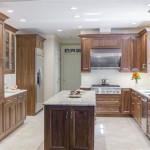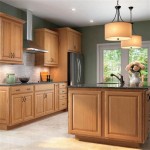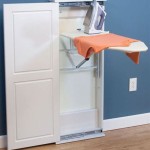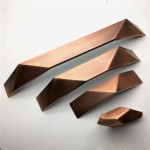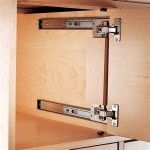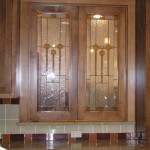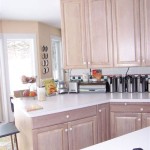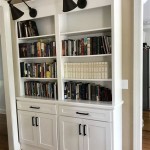Enhance Your Bathroom With A Sink Cabinet Design
The bathroom, often the smallest room in a house, plays a crucial role in daily routines. Its functionality and aesthetic appeal directly influence the overall living experience. A key element in any bathroom design is the sink cabinet. More than just a place to mount a sink, a well-chosen sink cabinet provides storage, conceals plumbing, and contributes significantly to the room's style. Careful consideration of the design is essential to create a bathroom that is both practical and visually appealing.
Selecting the right sink cabinet involves evaluating several factors, including the available space, the desired storage capacity, the existing bathroom décor, and the budget. Options range from simple, freestanding vanities to complex, custom-built units. Each choice presents unique advantages and disadvantages, impacting the overall functionality and appearance of the bathroom.
Space Optimization and Layout Considerations
Before exploring specific designs, an accurate assessment of the bathroom's dimensions is paramount. The size and shape of the room will significantly dictate the type of sink cabinet that can be accommodated. In smaller bathrooms, wall-mounted or corner sink cabinets can maximize floor space, creating an illusion of greater openness. These cabinets are particularly useful for powder rooms or guest bathrooms where storage needs are minimal.
In larger bathrooms, the options expand considerably. Double sink vanities, offering two sinks and ample storage, become a viable choice for couples sharing the space. These units can streamline morning routines and reduce congestion. Alternatively, L-shaped or U-shaped configurations can create a more luxurious and functional layout, especially when combined with ample countertop space for toiletries and personal care items.
The placement of existing plumbing lines also influences the cabinet selection. Moving plumbing can be costly and disruptive, so it's often more practical to choose a cabinet that is compatible with the existing infrastructure. If relocation is necessary, professional plumbing assistance is highly recommended to ensure proper installation and prevent future issues.
Beyond the size and shape of the room, consider the traffic flow. The sink cabinet should be positioned in a location that allows for comfortable movement and doesn't obstruct access to other fixtures, such as the toilet or shower. Adequate clearance around the cabinet is essential for ease of use and safety.
Material Selection and Durability
The material used in constructing the sink cabinet significantly impacts its durability, longevity, and aesthetic appeal. Several materials are commonly used, each with its own set of advantages and disadvantages.
Solid wood is a classic choice, known for its beauty and durability. Hardwoods like oak, maple, and cherry are particularly resistant to moisture and wear, making them well-suited for bathroom environments. However, solid wood cabinets tend to be more expensive than other options. Proper sealing and finishing are crucial to protect the wood from water damage and prevent warping or cracking.
Plywood, a manufactured wood product, offers a more affordable alternative to solid wood. High-quality plywood, with multiple layers of veneer, is surprisingly strong and stable. It resists warping and shrinking better than solid wood, making it a good choice for humid environments. Plywood cabinets are often finished with veneers or laminates to enhance their appearance.
Medium-density fiberboard (MDF) is another engineered wood product that is commonly used in cabinet construction. MDF is smooth and uniform, making it ideal for painting or laminating. It is also relatively inexpensive. However, MDF is more susceptible to water damage than solid wood or plywood, so it's important to choose a cabinet with a durable, water-resistant finish.
Laminates and veneers offer a wide range of aesthetic options, mimicking the look of natural wood, stone, or other materials. Laminates are durable and easy to clean, making them a practical choice for bathroom cabinets. Veneers offer a more realistic wood grain appearance but require more careful maintenance.
Beyond the cabinet box material, consider the countertop material. Options include granite, marble, quartz, solid surface, and laminate. Each material offers a different combination of durability, aesthetics, and cost. Granite and quartz are highly durable and resistant to stains, while marble offers a luxurious appearance but requires more maintenance. Solid surface materials are non-porous and easy to repair, while laminates are an affordable and practical choice.
Storage Solutions and Functionality
The primary function of a sink cabinet is to provide storage for bathroom essentials. A well-designed cabinet maximizes storage space and keeps toiletries organized and accessible. Consider the specific storage needs before selecting a cabinet design.
Drawers are ideal for storing smaller items, such as makeup, hair accessories, and toiletries. Full-extension drawers allow for easy access to items stored at the back of the drawer. Soft-close mechanisms prevent slamming and add a touch of luxury. Drawer dividers and organizers help keep items neatly arranged and prevent them from rolling around.
Cabinets with doors are suitable for storing larger items, such as towels, cleaning supplies, and extra toiletries. Adjustable shelves allow for customization and flexibility. Consider adding pull-out shelves or baskets to improve accessibility and visibility. Door-mounted organizers provide additional storage space for smaller items.
Some sink cabinets incorporate specialized storage solutions, such as tilt-out drawers for storing toothbrushes and toothpaste, or built-in hampers for collecting laundry. These features can further enhance the functionality and convenience of the bathroom.
The arrangement of storage spaces within the cabinet is also important. Consider how frequently different items are used and place them in easily accessible locations. Items used daily should be stored within easy reach, while less frequently used items can be stored in less accessible areas.
Beyond the internal storage, the countertop space also contributes to functionality. Adequate countertop space is essential for placing toiletries, styling tools, and other personal care items. Consider the amount of countertop space needed based on personal habits and needs.
Lighting within the sink cabinet can also enhance functionality. Consider adding LED strip lights inside the cabinet to illuminate the contents. This can make it easier to find items and prevent clutter by providing better visibility.
The hardware used on the sink cabinet, such as handles and knobs, also contributes to its functionality and aesthetic appeal. Choose hardware that is comfortable to grip and easy to use. Consider the style and finish of the hardware to complement the overall design of the bathroom.
In summary, selecting the right sink cabinet design involves careful consideration of space optimization, material selection, and storage solutions. By thoughtfully evaluating these factors, individuals can create a bathroom that is both functional and aesthetically pleasing, enhancing their daily routines and overall living experience. Paying attention to detail in the design and implementation process will ultimately lead to a more satisfying and valuable bathroom space.

Under Sink Storage Ideas For Your Home Designcafe

Upgrade Your Bathroom With The Latest Sink Designs

Bathroom Cabinet Design Ideas That Are Functional Stylish For Your Modern Beautiful Homes

10 Ways To Improve Your Bathroom Space And Layout

12 Ways To Upgrade Your Bathroom Vanity Without Replacing It

Upgrade Your Bathroom With Stylish And Functional Vanities

Elevate Your Bathroom S Aesthetic Creative Design Ideas For An Impres

Bathroom Cabinet Design Ideas That Are Functional Stylish For Your Modern Beautiful Homes

Enhance Your Bathroom Renovation With These Tricks Tips

Tips For Guest Bathroom Remodel To Please Guests Increase Home Value
Related Posts

